The U.S. Fish and Wildlife service conducted two surveys in 2019 aimed at documenting the current distribution, composition, and density of the larval coregonid community in Saginaw Bay. Sampling was limited to pelagic ichthyoplankton and beach seining due to the...
2019
Production, fish health surveillance, and research at Northeast Region U.S. Fish & Wildlife Service (USFWS) facilities to support restoration of sustainable coregonid populations in Lake Ontario
Region 3 wild coregonine broodstock collection activities for FY 2019 in support of restoration activities on Lake Huron and Lake Ontario
The U.S. Fish and Wildlife Services Midwest Region Fisheries Program carried out two projects in support of a multi-agency effort to restore coregonid populations in Lake Huron and Lake Ontario. The first project began in 2017 when USFWS started collecting cisco...
Susceptibility and clearance of Aeromonas salmonicida (furunculosis) in Coregonus artedi (lake herring)
Aquaflor® (florfenicol) and Terramycin®200 for Fish (oxytetracycline) are approved medications in the United States for delivery with feed to control mortality in salmonids due to furunculosis associated with Aeromonas salmonicida. The purpose of this study was to...
Building molecular tools for coregonine species identification
The larval phase of Coregonus spp. represent a bottleneck in year class strength that is not well understood in extant populations and could present an impediment for coregonine restoration efforts in the Great Lakes. The use of species-specific DNA sequences to...
Genetic diversity among Great Lakes cisco species: exploring taxonomic and population boundaries
Ciscoes (Coregonus artedi, hoyi, kiyi, zenithicus, and nigripinnis) once formed a diverse species flock in the Great Lakes. While several taxa appear to have been extirpated, those that remain are an important part of the Great Lakes food web. Deepwater forms (C....
How does ecological function correspond to morphology in coregonines from Lakes Superior, Michigan, and Huron?
Fish managers recognize the value of diversity, within species and within communities, but most are focused on how diversity translates to function within the food web. For example, how does the diet of lake whitefish (Coregonus clupeaformis) differ from that of cisco...
Movements and habitat use of cisco along a nearshore-offshore gradient in northern Lake Huron
Ciscoes (Coregonus artedi) were an abundant prey fish that linked lower and upper trophic levels in each of the Great Lakes until overexploitation, non-native fish invasions, and environmental degradation resulted in large-scale extirpation and range reduction in the...
Site fidelity, depth-habitat use, and reproductive behavior of ciscoes in Grand Traverse Bay, Lake Michigan
Successful reintroduction of cisco (Coregonus artedi) to the Great Lakes requires that stocked individuals are suitably adapted to environmental conditions at stocking sites. Thus, understanding how cisco ecology, life history, and behavior varies among extant...
